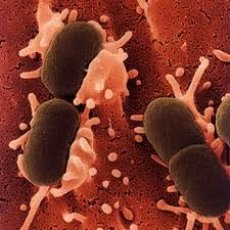A dangerous strain of Escherichia coli was detected in seven patients in the UK
Last reviewed: 23.04.2024

All iLive content is medically reviewed or fact checked to ensure as much factual accuracy as possible.
We have strict sourcing guidelines and only link to reputable media sites, academic research institutions and, whenever possible, medically peer reviewed studies. Note that the numbers in parentheses ([1], [2], etc.) are clickable links to these studies.
If you feel that any of our content is inaccurate, out-of-date, or otherwise questionable, please select it and press Ctrl + Enter.

A dangerous strain of Escherichia coli, from which 18 people died in Europe, was detected in seven patients in the UK, the Associated Press agency reported on Thursday referring to the British Health Protection Agency.
As noted in the message of the agency, all those infected recently returned from a trip to Germany, where the majority of cases of infection are registered.
More detailed information, in particular, about which areas of the country the cases of infection were detected, and when the diseased visited Germany, the agency does not.
At the same time, as it is stressed in the message, the British experts do not yet have data about where the source of the infection was located - inside the country or was imported from the outside.
Intestinal infection, which killed 17 people in Germany and one in Sweden, is caused by the so-called enterohemorrhagic bacterium Escherichia coli (E. Coli). According to the World Health Organization (WHO), the bacterium E. Coli is often present in the intestines of humans and warm-blooded animals. Most of its strains are harmless, but some strains, such as enterohemorrhagic E. Coli (EHEC), can cause severe foodborne illnesses. The outbreak of the disease was initially recorded in the north of Germany.
Symptoms caused by bacteria EHEC diseases - bloody diarrhea, fever and vomiting. Most patients recover within ten days, but in a small number of patients (young children and the elderly) the disease can take a severe form with a life threat. According to data on Thursday, more than 1.5 thousand cases were registered.
Enterohemorrhagic escherichiosis in children. Causes. Symptoms. Diagnostics. Treatment
The source of the infection is still unclear. Previously, German scientists assumed that the carrier of the causative agent of the disease are salad cucumbers from Spain, but this information was not confirmed. Farmers report a weekly loss of tens of millions of euros, scientists continue to search for the spreader of the infection.

 [
[